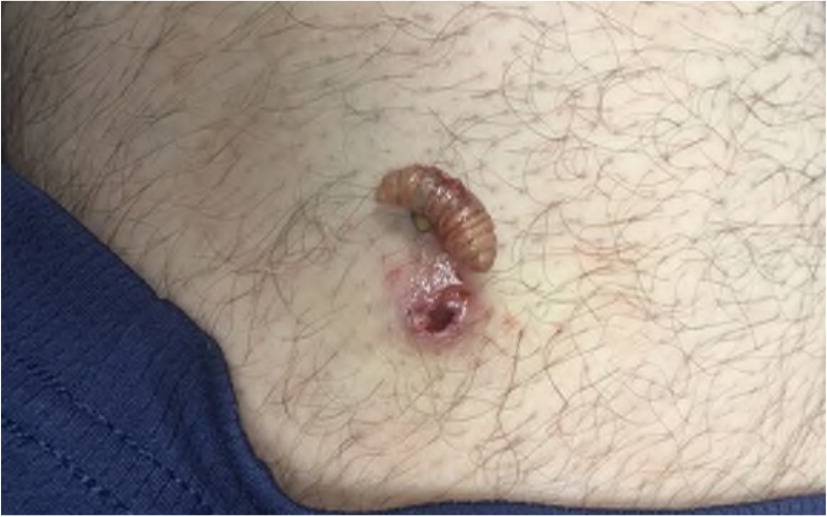
Am Fam Physician. 2020;102(6):326-327
Author disclosure: No relevant financial affiliations.
To the Editor: A 19-year-old, healthy-appearing White man reported to his university's health clinic with a three-week history of pruritic lesions on his right dorsal foot, left anterior shin, and left posterior thigh. Other symptoms included bleeding, warmth, and occasional shooting pain localized to the lesions. His travel history included a one-and-a-half-week vacation to Costa Rica three to four weeks before the lesions developed. The patient could not recall any insect bites and reported no exposure to fresh water or the rainforest, and his travel companions were unaffected. He was prescribed a three-day course of the antiparasitic agent albendazole (Albenza) and was referred to a dermatologist.
When the patient presented to the dermatologist one week later, the lesions were pruritic and tender, approximately 1.5 cm in diameter, erythematous, and nodular with an indurated center and bloody discharge. The patient had no fever, malaise, or lymphadenopathy. A 4-mm punch biopsy on the left shin did not reveal any insects. At the 10-day follow-up, the two other lesions were incised and a larva was extracted from each. A photograph (Figure 1) was sent to the Centers for Disease Control and Preventions' Parasitology Division and the larva was identified as the human botfly (Dermatobia hominis). The incisions were closed, and sutures were removed two weeks later. All sites healed well without recurrence.

Botfly myiasis is common in Central and South America, but cases have increased in the United States because of tourism.1 Eggs are transferred by a vector (typically mosquitos), hatch immediately, and enter the skin through a bite puncture. The larva protrudes its breathing tube, burrows deeper, and develops over five to 10 weeks, presenting as a furuncular lesion with a central opening and pruritus, pain, and serosanguineous discharge.2 Patients often do not recall exposure to a vector but may have swum in fresh water or hiked in a warm, humid climate.3 Myiasis is possible without obvious exposures and should be considered in patients who develop lesions after traveling to endemic areas. In these areas, cutaneous myiasis is often treated with an occlusive, which suffocates the larva and forces it to emerge.4 Surgical removal of the larva using a local anesthetic is curative. Prophylactic antibiotics can be prescribed, and an antiparasitic (e.g., ivermectin [Stromectol]) is recommended in patients with multiple myiasis.5 Misdiagnosis causes persistent discomfort and can result in secondary bacterial infection.2 These findings highlight the clinical importance of including botfly infestations in the differential diagnosis of travelers to Central and South America.
